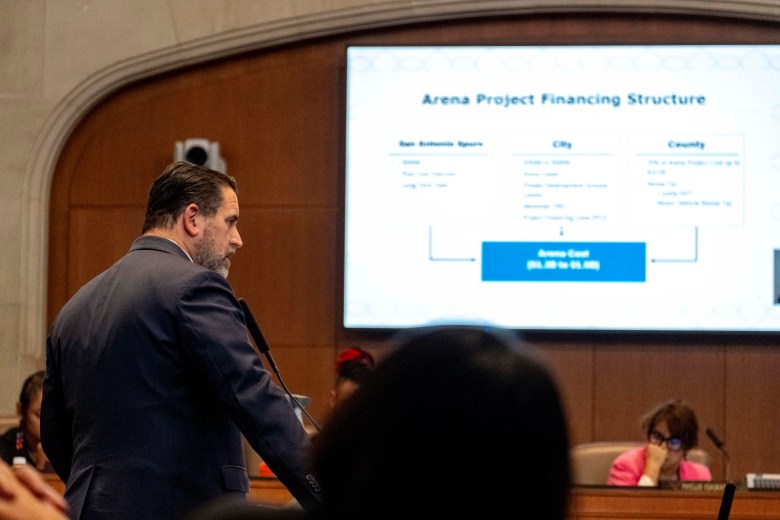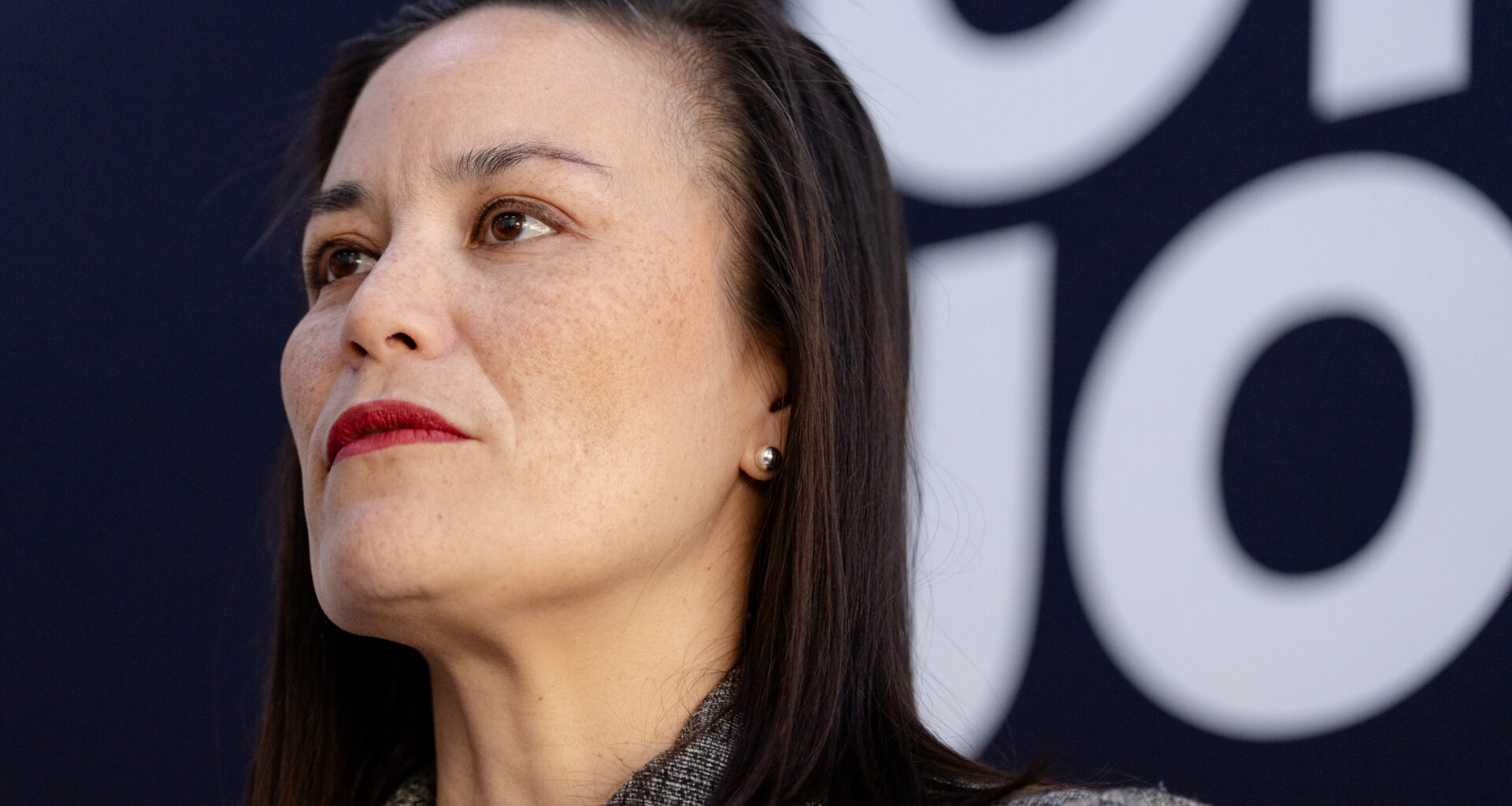Weeks after the San Antonio Spurs’ owners removed one of the biggest roadblocks to their plans for a new downtown arena, another potentially major delay has emerged.
San Antonio Mayor Gina Ortiz Jones told reporters Monday that the city will solicit bids and select a firm to conduct an “independent economic analysis” of the proposed sports and entertainment district known as Project Marvel.
The results will inform whether the city puts up money for a roughly $4 billion project, which currently leans on a combination of city and county money, reinvested state taxes and private investment. The arena alone is expected to cost between $1.3 billion and $1.5 billion.
The city of San Antonio already paid CSL Consulting for an economic analysis of Project Marvel, but the company did little to evaluate the arena in that assessment, instead leaning on data provided by the Spurs.
Jones and four of the city’s 10 council members were just elected this year, and the mayor said Monday that there was no reason for them to rush into a project that previous city leaders had not fully interrogated.
“This is a different City Council, and we have, I think, different expectations about the due diligence that is necessary for this generational investment,” the mayor said at a press conference Monday.
The City Council was expected to discuss the terms of San Antonio’s projected $500 million investment in the arena portion of the project later this month, with City Manager Erik Walsh targeting an Aug. 21 deadline for a potential deal.
But Jones indicated Monday that San Antonio may actually take several more months to make a decision on whether to commit money to the project, noting that leaders could use that time to see whether it still works with the city’s evolving finances.
The city could wind up absorbing the costs of programs previously funded by the federal government, she said, as well as paying for a number of pending flood control efforts, if state lawmakers don’t approve money for them during the special session.
“[Spurs’ lawyer] Bobby Perez, at the last [council] session, just said we may not need to leave the arena early, which means we actually have now much more time to do this,” Jones said, referring to the Spurs’ current home at the East Side’s Frost Bank Center, where the team’s lease runs through 2032.
“We should not put impose on ourselves artificial timelines.”
Stops and starts
Jones, who was elected in June, is now the second local leader to personally pump the brakes on a project that Spurs leaders say is critical for their organization’s future, but for which many details — such as the cost of the arena — are still unknown.
Earlier this year Bexar County Judge Peter Sakai shot down the Spurs’ request to call a quick vote on increasing the county’s venue tax to help pay for the arena, saying at the time that the public needed way more information about the details of such a major public investment.
(Project Marvel was first presented to the city in November, and Sakai was being asked to meet the mid-February deadline to put a funding mechanism for the arena on the May ballot.)
After months of negotiations Sakai came around on the project earlier this month, and county leaders agreed to put the venue tax increase before voters on this November’s ballot.
When discussions moved to the city last week, the majority of City Council members said they hoped to keep the project moving forward but Jones called for a “strategic pause” — raising some questions about city staff’s ability to move forward against the mayor’s wishes.
On Monday, Jones announced that Walsh had agreed to her request for the additional study, which could take 60 to 90 days, and should look more like the 73-page economic analysis that CSL Consulting provided for the city of Philadelphia surrounding plans for a new arena for the Sixers.
“If an independent economic analysis corroborates the numbers that the Spurs have provided, their consultant has provided, … then I think we can have the conversation,” Jones said. “However, if it’s different, then we should also understand that.”
 City Manager Eric Walsh addresses the council during a special session to discuss Project Marvel funding on Friday, July 25. Credit: Amber Esparza for the San Antonio Report
City Manager Eric Walsh addresses the council during a special session to discuss Project Marvel funding on Friday, July 25. Credit: Amber Esparza for the San Antonio Report
In a letter to the mayor and council Monday, Walsh acknowledged that he’s committed to “exploring the framework around another economic analysis,” but he suggested the council would have a say on whether to pursue it.
“I’ll be looking for direction from the mayor and council before any additional steps are taken on this additional analysis,” he wrote.
Deal or no deal
Jones’ overall commitment to the downtown arena project, which started taking shape more than a year before the May 2025 mayor’s race, remains a major question to both proponents and critics of Project Marvel.
She was openly skeptical of the project on the campaign trail and regularly criticized other candidates for being too accommodating to the Spurs.
But Jones softened her approach in the June runoff with business-backed Rolando Pablos, and kept the door open to a potential deal, including pushing for a profit-sharing model that’s been panned by Spurs’ leaders.
Jones said Monday that her call for a fresh economic analysis were motivated by voters who stressed throughout the campaign that wanted to see the city working to address poverty, and to see San Antonio rise to the level of other major cities.
Unlike the county’s money, Jones noted, San Antonio voters won’t get to weigh in on the city’s investment.
“They are trusting the City Council to make sure that we do our due diligence,” she said.
She hopes the new economic analysis will be completed before voters weigh in on the county venue tax this November.
“I think that’d be very helpful for voters to see that.”
